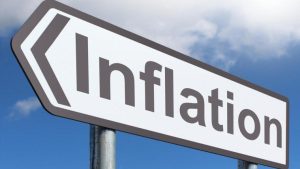If you're looking to buy a home right now, you might notice it's a bit…
30 Factors Influencing Mortgage Interest Rates: An Expert Analysis
Mortgage interest rates are a critical aspect of the home-buying process, and understanding what influences these rates can empower borrowers to make informed decisions. As an expert in the mortgage industry, I’m providing an in-depth look at the 30 factors that significantly impact mortgage interest rates.
- Central Bank Rates: The federal funds rate in the U.S. is a primary benchmark for short-term interest rates, indirectly affecting mortgage interest rates.
- Inflation: Generally, higher inflation leads to higher mortgage interest rates.
- Economic Growth: A robust economy often results in increased mortgage interest rates due to heightened borrowing demand.
- Unemployment Rate: Higher unemployment rates might lead to lower mortgage interest rates as a stimulus measure.
- Government Debt: Nations with high national debts typically face higher mortgage interest rates.
- Monetary Policy: Decisions by central banks about money supply directly influence mortgage interest rates.
- Stock Market: Strong stock market performance can result in mortgages needing to offer higher interest rates to attract investors.
- Global Economic Factors: Worldwide economic conditions can significantly impact mortgage interest rates.
- Real Estate Market Health: A high demand in the housing market can drive up mortgage interest rates.
- Loan-to-Value Ratio (LTV): A higher LTV often leads to higher mortgage interest rates.
- Credit Score: Borrowers with better credit scores usually receive lower mortgage interest rates.
- Debt-to-Income Ratio: Higher ratios can result in higher mortgage interest rates.
- Property Type: Mortgage interest rates can vary depending on whether the property is an investment or a primary residence.
- Loan Amount: Larger, or “jumbo,” loans often have different mortgage interest rates.
- Loan Term: The length of the mortgage, such as 15 or 30 years, affects interest rates.
- Fixed vs. Adjustable: There’s a difference in interest rates between fixed-rate and adjustable-rate mortgages.
- Points: Paying points upfront can lower your mortgage interest rate.
- Loan Type: Different loan types, like conventional, FHA, VA, or USDA, have varying interest rates.
- Secondary Market: The buying and selling of mortgage loans can influence interest rates.
- Lender Overhead and Profit Margin: Different lenders have varying overhead costs, affecting their offered interest rates.
- Lender Competition: More competition in the market can lead to more competitive mortgage interest rates.
- Refinancing Rate: The rate of refinancing in the market can impact mortgage interest rates.
- Regulatory Changes: Government regulations on lending can influence mortgage interest rates.
- Borrower Stability: Factors like employment history impact the offered interest rate.
- Lock-In Period: The duration for which a mortgage interest rate is guaranteed can affect its level.
- Down Payment: Larger down payments often result in lower mortgage interest rates.
- Property Use: Different uses of the property can affect the mortgage interest rate.
- Location: Interest rates can vary by region and state.
- Mortgage Insurance: Required insurance can affect the overall effective interest rate of a mortgage.
- Economic Indicators: Various economic reports can influence mortgage interest rates.
Understanding these factors is key to navigating the complexities of mortgage interest rates. Whether you’re a first-time homebuyer or a seasoned investor, knowing what affects your mortgage rate is essential. For further information or personalized advice, feel free to contact me.
You can email sswinford@hancockmortgager.com or fill out an application here.





